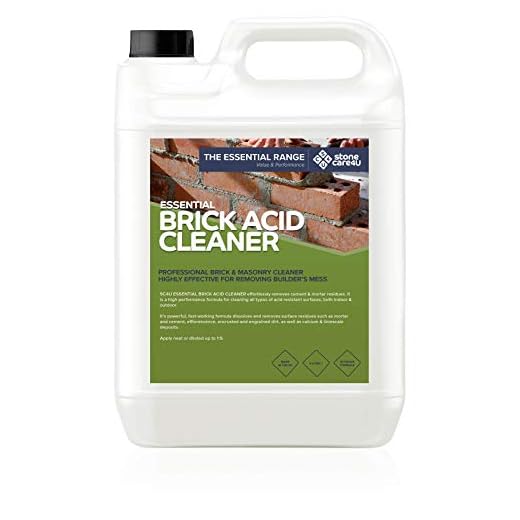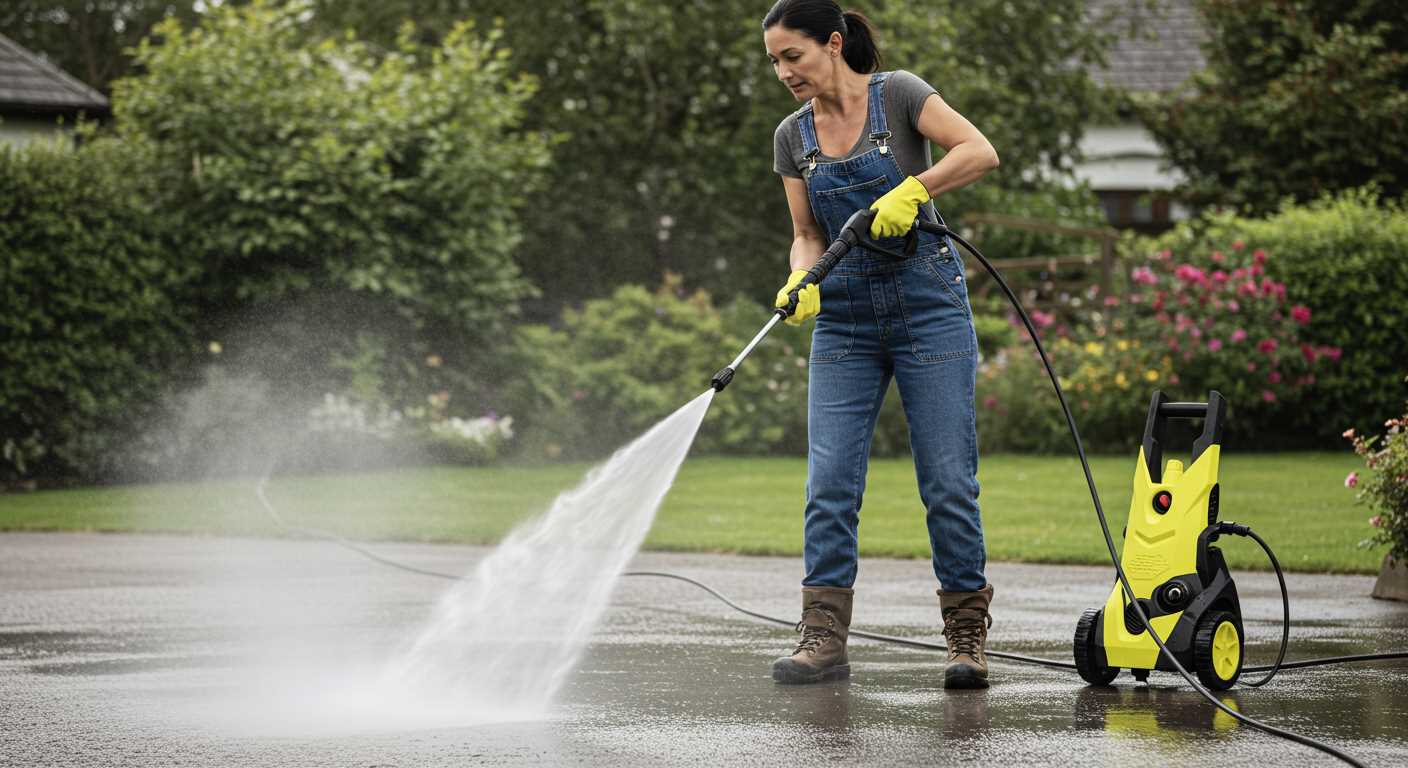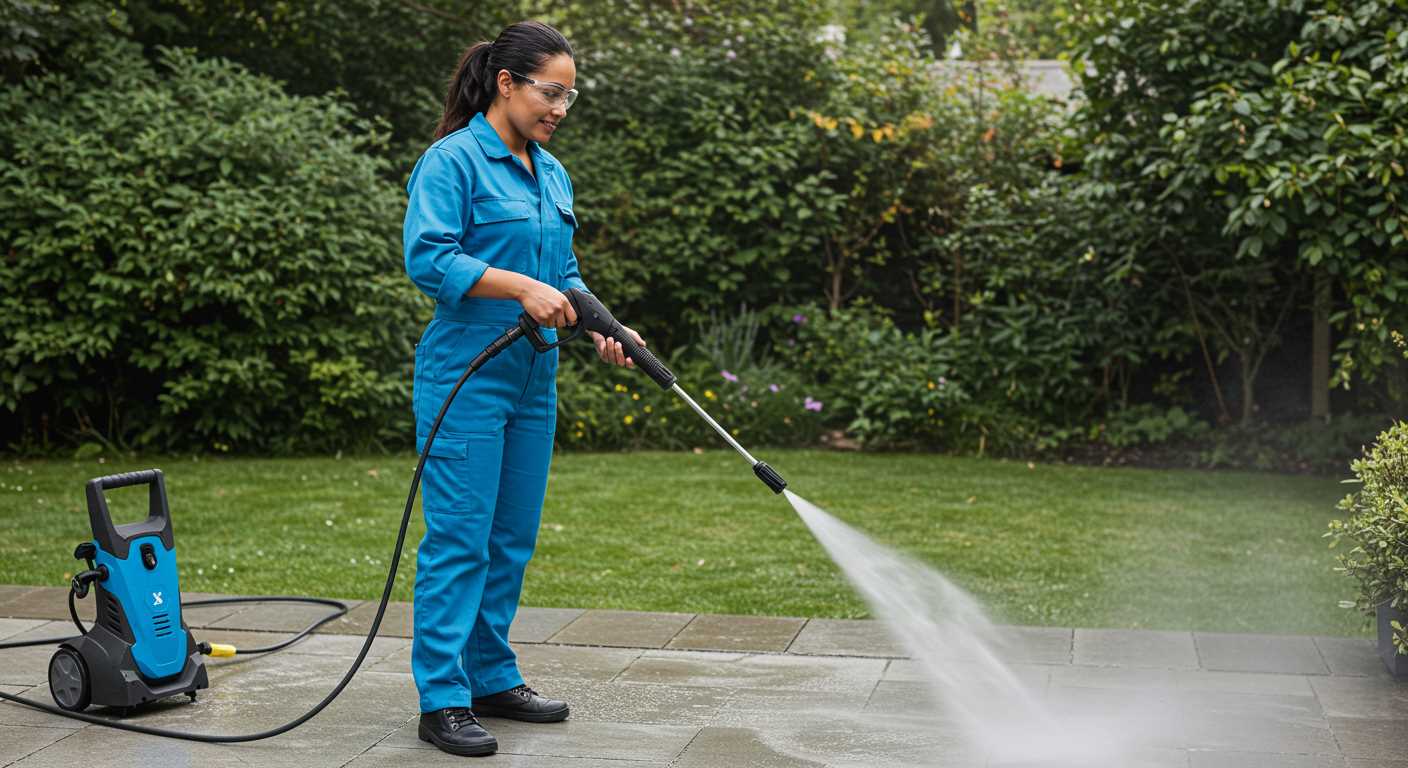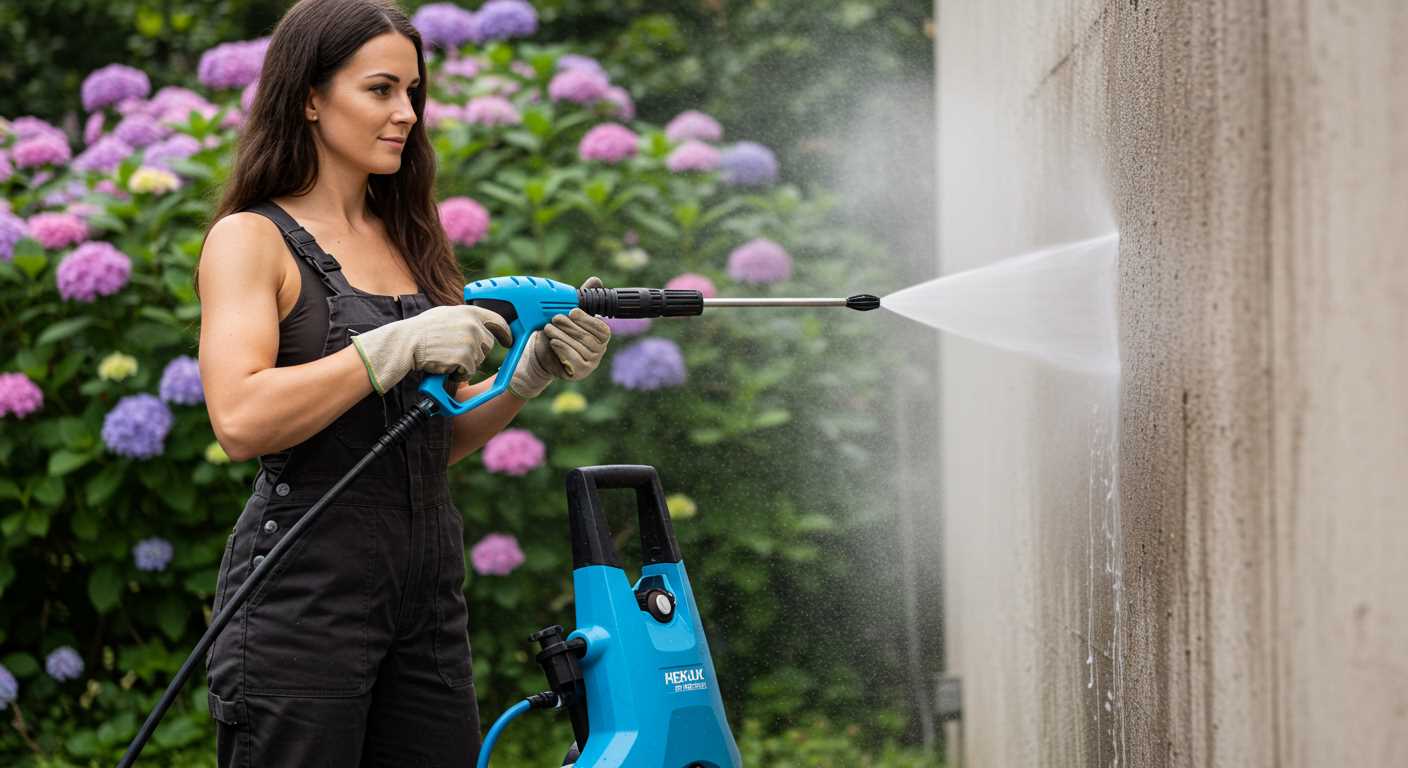



Using high-pressure cleaning technology on brick surfaces is possible, but caution is paramount. If the pressure level exceeds the recommended 1500 to 2000 PSI, the risk of surface erosion increases significantly. Cracks may appear, allowing moisture penetration that compromises structural integrity over time.
For optimal cleaning without risking harm, I advise utilising a fan spray nozzle rather than a concentrated jet. This method distributes the force more evenly, reducing the likelihood of damage. Additionally, maintaining a distance of at least 12 inches while cleaning helps further minimise potential adverse effects.
Regular maintenance on bricks typically requires no more than a gentle wash with a mild detergent and warm water. For stubborn stains, it’s advisable to perform spot cleaning using the lower pressure setting, safeguarding the surface while ensuring effective cleaning. For those seeking a professional shine, consider hiring expert services that specialise in masonry care to avoid any unintentional harm.
Understanding the Effects of High-Pressure Cleaning on Masonry

I recommend caution when using high-velocity cleaning equipment on masonry surfaces. Excessive force can lead to issues such as chipping, spalling, and erosion of the mortar joints. These problems occur because the intense jets can penetrate the porous surfaces and weaken structural integrity over time.
Key Considerations
- Pressure Settings: Always adjust the machine to a lower setting before starting on brick. A maximum pressure of around 1500 PSI is often sufficient for basic cleaning without risk.
- Nozzle Choice: Utilise a wider nozzle to disperse the water flow across a larger area, reducing the risk of focused energy that can harm the surface.
- Distance From Surface: Maintain at least 2 feet of distance between the nozzle and the wall. This helps mitigate concentrated pressure on any one area, further preventing damage.
- Cleaning Technique: Apply a fan-shaped pattern while cleaning rather than a direct stream to lessen the impact on the surface.
Preventative Measures
- Conduct a thorough inspection to assess the condition of the masonry before cleaning.
- Test a small, inconspicuous area to evaluate results and adjust your approach if needed.
- Consider using alternative cleaning methods, such as soft washing, for sensitive surfaces.
Being mindful of these best practices will ensure your cleaning efforts enhance rather than compromise the longevity of the structure.
Understanding Brick Composition and Durability
The composition of bricks significantly influences their resilience. Generally, bricks consist of clay, shale, or concrete, which are fired at high temperatures to enhance strength. Different types originate from various materials, affecting their porosity and durability.
Types of Bricks and Their Properties
- Clay Bricks: Traditionally used, known for excellent thermal properties and strength. They typically absorb water, impacting their longevity if not properly maintained.
- Concrete Bricks: Made from cement and aggregates, these resist moisture better and are less prone to cracking, making them suitable for various climates.
- Fly Ash Bricks: Eco-friendly and lightweight, these bricks are durable and have insulating properties, but may require specific care during cleaning to maintain integrity.
Factors Affecting Durability

- Porosity: High porosity can lead to increased water absorption, making the material susceptible to freeze-thaw cycles.
- Quality of Production: Well-manufactured bricks from reliable sources generally offer enhanced strength and weather resistance.
- Environmental Factors: Pollution and weather conditions may lead to deterioration over time, necessitating regular maintenance to preserve appearance and structure.
To preserve the quality of brick structures, I recommend assessing their composition prior to any cleaning efforts. Understanding the type of brick can guide appropriate maintenance techniques to enhance longevity without compromising the material’s structural integrity.
Recommended Pressure Settings for Cleaning Brick
For cleaning brick surfaces, I recommend using a setting around 1500 to 2000 PSI. This range effectively removes dirt and grime without risking harm to the masonry.
Utilising a wide-angle nozzle, such as a 25 or 40-degree tip, will help distribute the water flow more evenly and reduce the risk of etching the material. Always maintain a distance of at least 12 inches from the surface to avoid concentrated force.
If you encounter stubborn stains, you can gradually increase the pressure to 2500 PSI, but it’s crucial to test a small, inconspicuous area first to ensure there’s no adverse effect.
Using a consistent, sweeping motion will prevent water from pooling and ensure thorough cleaning. Combine your efforts with a suitable cleaning solution specifically designed for masonry for enhanced results.
Lastly, regardless of the settings used, ensure to rinse the surfaces adequately after cleaning to remove any residual detergents, which can lead to discolouration if left unattended.
Risks of High Pressure on Fragile Brick Surfaces
Utilising a high-force cleaning method on delicate masonry can lead to significant issues. The impact of such a method may cause fractures and accelerate wear, particularly in specified types of bricks or those exhibiting signs of age.
Surface Damage and Erosion
Acting with excessive force can strip away the protective outer layer, exposing the more vulnerable substrate beneath. This erosion not only affects the aesthetic quality but also diminishes the structural integrity over time. Loose mortar could separate, leading to further complications if not addressed promptly.
Unexpected Outcomes of Water Infiltration
Directing a strong jet of water onto susceptible surfaces can create channels for moisture penetration. This infiltration may foster conditions for mould and moss growth, which can exacerbate the decline of the structure. In regions subjected to freezing temperatures, trapped water could expand and induce more severe physical damage during freeze-thaw cycles.
In light of these factors, I recommend testing on a small area first, opting for lower force settings, and employing additional cleaning techniques, such as brushes or more manual approaches, in conjunction with light water use. This duality can help maintain both the appearance and longevity of these surfaces.
Cleaning Techniques to Minimise Damage
Begin with a thorough assessment of the surface to determine the level of grime and stains present. For light cleaning, utilise a soft-bristle brush and a diluted mild detergent solution to loosen dirt before rinsing with low-flow water. This reduces the need for high-velocity tools.
If stubborn stains persist, consider using a mixture of vinegar and water or a specialised cleaning solution tailored to masonry. Apply the solution using a spray bottle and allow it to sit for several minutes to break down the stains before scrubbing gently.
When utilising high-pressure tools, maintain a distance of at least 24 inches from the surface to lessen the intensity of the stream hitting the material. Employ a fan nozzle attachment to distribute the water more evenly, which diminishes concentrated force on any one area.
Adjust the nozzle to a wider spray pattern when cleaning. This will further reduce the impact force while increasing the coverage area. Remember to always hold the tool at a slight angle to direct water away from the joints and into the surface, preventing water from being forced into cracks.
In cases of significant buildup, pre-soaking the area before employing mechanical cleaning can save time and effort. Allowing the cleaning solution to penetrate the grime for several minutes can make the removal process smoother and less aggressive on the surface.
Staying vigilant about the weather conditions also helps; avoid cleaning during windy days, which can cause debris to be forced into the material. Lastly, always wear appropriate safety gear to protect yourself from any irritants or slippery surfaces during the cleaning process.
Safe Detergents and Solutions for Brick Cleaning

For effective removal of grime from masonry, I recommend using a pH-neutral detergent specifically formulated for delicate surfaces. These solutions are typically biodegradable and will not harm the structure of the material.
Suggested Cleaning Agents
One effective option is a mixture of warm water and dish soap. Combine about 1 cup of soap with 5 gallons of water. This solution lifts dirt without causing any wear on the surface.
Another alternative is a specialised brick cleaner that is non-acidic. These products are designed to penetrate dirt and stains without compromising the integrity of the masonry itself. Always test on a small, inconspicuous area before full application.
Homemade Solutions
Mixing vinegar and water can also be useful for mild staining. A solution of 1 part vinegar to 4 parts water can help break down organic mould and mildew. However, be cautious with the concentration to avoid any potential adverse effects on the surface.
For stubborn stains, a paste made from baking soda and water can aid in scrubbing away imperfections without scratching.
Always rinse thoroughly after applying any cleaning solution, as residue can lead to further discolouration or buildup over time. Keeping these formulations in mind will extend the life of your masonry while ensuring a thorough clean.
Signs of Damage After Pressure Washing Brick
Look for specific indicators such as crumbling edges, exposed aggregate, or unusual colour changes on the surface. These signs can suggest that the integrity of the masonry has been compromised.
Small cracks may appear due to the intense force, especially in older structures. Inspect for hairline fractures that can develop into more significant issues over time. Regularly walking around the area will help identify these problematic areas early.
Moisture retention is another concern. If bricks absorb more water than usual, this can lead to efflorescence, where white salts form as the water evaporates. Noticing a white powdery residue on the surface is a clear indication of incorrect cleaning practices.
Pay close attention to the mortar joints as well. Signs of eroded or missing mortar between bricks can result from excessive force. Checking for loose pieces or gaps is crucial after an intensive wash to prevent water ingress.
Another crucial factor is the appearance of fading or stripping paint if the bricks are previously painted or stained. High pressure can remove layers unintentionally, leading to a less appealing finish.
| Signs of Damage | Potential Causes |
|---|---|
| Crumbling edges | Excessive force during cleaning |
| Hairline cracks | Inadequate pressure settings on delicate materials |
| White powdery residue | Moisture issues leading to efflorescence |
| Eroded mortar joints | Intense washing pressure |
| Fading paint or stain | Forceful treatment of painted surfaces |
Regular inspection post-cleaning can help mitigate long-term effects. Addressing these signs early may prevent further deterioration of the structure, maintaining its aesthetic and structural integrity.
FAQ:
Can pressure washing damage brick surfaces?
Yes, pressure washing can potentially damage brick surfaces if not done correctly. High-pressure water can erode the mortar between bricks and cause cracks in the brick itself. It’s important to use a suitable pressure setting and technique when cleaning bricks to minimise the risk of damage.
What precautions should I take before pressure washing brickwork?
Before pressure washing brickwork, inspect the condition of the bricks and mortar. Look for any loose or damaged areas that may be more susceptible to damage. It’s advisable to use a lower pressure setting and consider using a fan spray nozzle rather than a concentrated jet to reduce the risk. Additionally, test the pressure washer on a small, inconspicuous area to see how the bricks react before proceeding with the entire surface.
Are there alternative methods to clean brickwork without using a pressure washer?
Yes, there are several alternative methods to clean brickwork. For example, using a mixture of water and mild detergent can effectively remove grime without risking damage. Scrubbing with a stiff brush can also help dislodge dirt. For tougher stains, consider using a specialised brick cleaner that is safe for masonry. Always rinse thoroughly with water after cleaning to ensure no residues remain.
How can I tell if my brickwork has been damaged by pressure washing?
Signs of damage from pressure washing can include visible cracks in the bricks or mortar, loose bricks, or erosion of the surface that appears chalky or crumbled. If you notice any of these issues after using a pressure washer, it’s advisable to consult with a masonry professional for assessment and potential repairs. Regular inspections can help catch these issues early on to prevent further damage.






